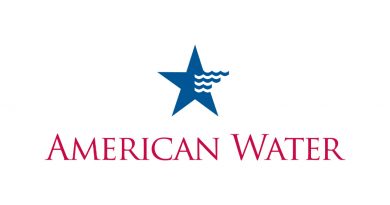Chad Sehlke Discusses The Importance of Client Feedback: Building a Feedback Loop to Enhance Services
In the dynamic world of consulting, where services are tailored to meet the specific needs of clients, understanding client satisfaction and areas for improvement is crucial. The importance of client feedback cannot be overstated; it serves as the cornerstone for enhancing consulting services and achieving higher levels of client satisfaction. Building a robust feedback loop is an essential strategy for any consulting firm aiming to maintain relevance and competitiveness in the industry. Chad Sehlke of Florida delves into the importance of client feedback and outlines effective strategies for collecting and utilizing this feedback to continuously improve consulting services.
The Significance of Client Feedback
Client feedback is a vital tool that provides consultants with insights into their performance, client needs, and areas for improvement. It helps in:
- Understanding Client Needs: Feedback allows consultants to gain a deeper understanding of their clients’ needs, preferences, and expectations. This understanding is essential for delivering personalized services that meet or exceed client expectations.
- Identifying Strengths and Weaknesses: Through feedback, consultants can identify what they are doing well and areas where they need to improve. This knowledge is crucial for making informed decisions and implementing effective changes.
- Enhancing Client Satisfaction: By actively seeking and addressing client feedback, consultants demonstrate their commitment to client satisfaction. This proactive approach can lead to stronger client relationships and higher levels of satisfaction.
- Driving Continuous Improvement: Feedback serves as a catalyst for continuous improvement. It provides a clear direction for making necessary adjustments and innovations in services, ensuring that the consulting firm remains competitive and relevant.
- Building Trust and Loyalty: When clients see that their feedback is valued and acted upon, it builds trust and loyalty. Clients are more likely to return for future services and recommend the firm to others.
Strategies for Collecting Client Feedback
Collecting client feedback should be a structured and ongoing process. Here are some effective strategies for gathering valuable insights from clients:
- Surveys and Questionnaires: Online surveys and questionnaires are an efficient way to collect feedback from a large number of clients. These tools can be customized to gather specific information about various aspects of the consulting services.
- Client Interviews: Conducting one-on-one interviews with clients provides an opportunity for in-depth discussions. This method allows consultants to gather detailed feedback and clarify any ambiguities.
- Feedback Forms: Implementing feedback forms at the end of each project or consulting session can capture immediate client impressions. These forms should be concise and focus on key areas of service delivery.
- Focus Groups: Organizing focus groups with a select group of clients can provide qualitative insights into their experiences. This interactive method encourages open discussions and can reveal valuable perspectives.
- Net Promoter Score (NPS): The NPS is a popular metric for measuring client loyalty. By asking clients how likely they are to recommend the consulting firm to others, consultants can gauge overall satisfaction and identify areas for improvement.
- Social Media and Online Reviews: Monitoring social media channels and online review platforms can provide unfiltered client feedback. Engaging with clients on these platforms also shows a commitment to addressing their concerns publicly.
Utilizing Client Feedback to Enhance Services
Once feedback is collected, the next step is to utilize it effectively to improve services. Here are strategies for turning feedback into actionable insights:
- Analyze Feedback: Thoroughly analyze the feedback to identify common themes, trends, and specific areas that need attention. This analysis should be systematic and objective to ensure accurate insights.
- Prioritize Issues: Not all feedback will be equally important. Prioritize issues based on their impact on client satisfaction and the feasibility of implementing changes. Focus on addressing the most critical areas first.
- Develop Action Plans: Create detailed action plans to address the identified issues. These plans should include specific steps, timelines, and responsible parties to ensure accountability and progress.
- Implement Changes: Execute the action plans promptly and efficiently. Ensure that all team members are aware of the changes and understand their roles in implementing them.
- Communicate with Clients: Keep clients informed about the actions taken based on their feedback. This communication shows that their opinions are valued and reinforces their trust in the consulting firm.
- Monitor and Evaluate: Continuously monitor the effectiveness of the changes and evaluate their impact on client satisfaction. This ongoing assessment helps ensure that improvements are sustainable and effective.
- Solicit Follow-Up Feedback: After implementing changes, solicit follow-up feedback to gauge client satisfaction with the improvements. This iterative process helps refine services and demonstrates a commitment to continuous enhancement.
Building a feedback loop to enhance consulting services is not just about collecting client feedback; it’s about creating a culture of continuous improvement and client-centricity. By systematically collecting, analyzing, and acting on feedback, consulting firms can enhance their services, increase client satisfaction, and build long-term trust and loyalty. The importance of client feedback lies in its ability to provide actionable insights that drive meaningful changes, ensuring that consulting services remain effective, relevant, and highly valued by clients.






